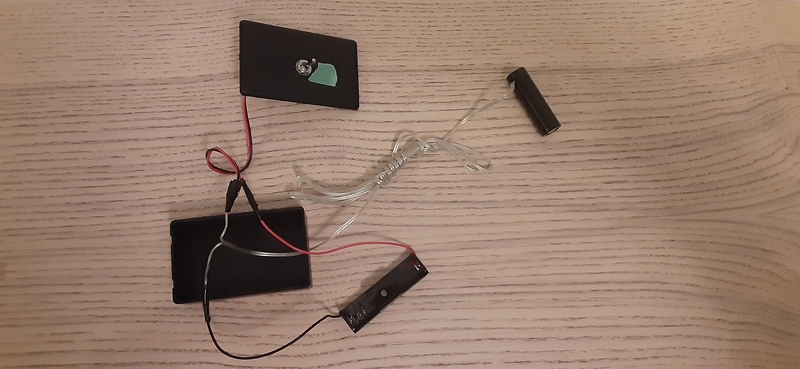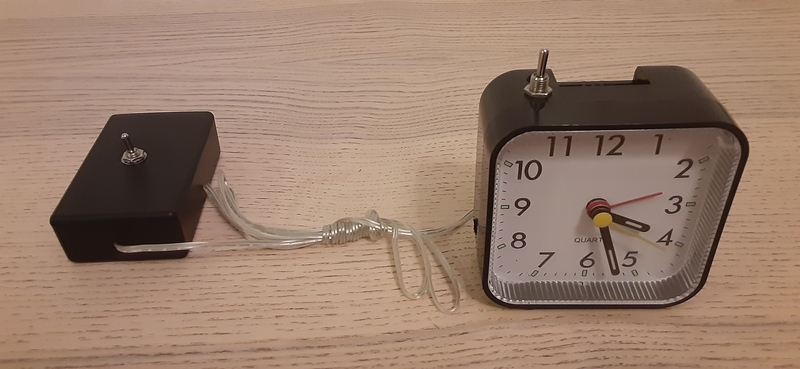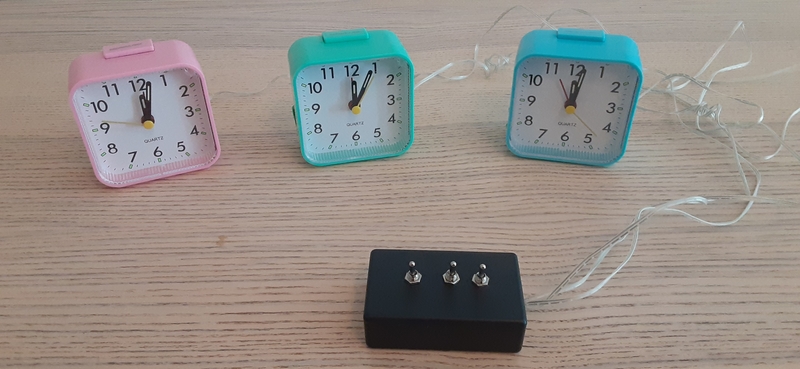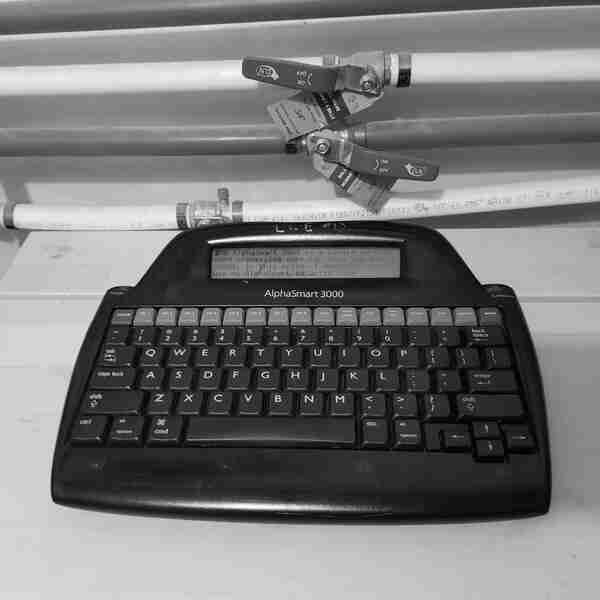My friend, Dave Gauer, built a "multitimer" back in 2021. It is a small desktop gizmo for keeping track of time spent on rapidly switching tasks. One pushes a button and time starts accumulating on that button's timer. Dave's multi-timer is based on a RaspberryPi Pico --- fancy micro-computer stuff. In fact, his unit has three distinct microcontrollers in it: the keypad and LCD each have their own!
Did an academic already do this?
Thinking about Dave's multi-timer, I was reminded of a hazy memory whose source I can't seem to track down. At some point, there was an academic, perhaps a mathematician, who had several clocks in their office. They used them for keeping track of various commitments such as teaching, writing, and graduate supervision. Their multi-timer had a row of switches for turning the various clocks on and off. It's a rudimentary but effective design.
I decided to go down the rabbit hole of implementing such a system using battery powered alarm clocks. It turned out to be a great adventure for someone with no background in electronics.
Dave also does a great job documenting his projects. It's a whole thing for him. I figured that I should document this little project for the Webpage Jam. It's nice to see that ~jara25 made a "task timer" as their contribution to the jam.
Add a toggle
The first idea was to add a toggle to a battery operated alarm clock. I picked up cheap alarm clock and started tinkering. At first, I couldn't even figure out how to get the clock open!
My Swiss Watch Maker Neighbour
When I was growing up in London, Ontario, my next door neighbour was a Swiss trained watch maker, Charles Brunner (1930-2012). He was originally from Bern, I think. His wife would baby sit me occasionally. My family adopted a lot of Swiss cooking and culture from them. I remember thinking that his workshop, which took up half of the ground floor of the house, was an absolute wonderland. It was full of tools, clocks in various states of repair, and a magical aroma: machine oil, old wood, and love.

A picture of Charlie from his obit.
Initially, I thought that the body was an injection moulded clam shell. I looked at the "seam" around the end but couldn't get it open. A few messages to friends didn't help --- we all thought it was a clam shell. A bit of rough-housing revealed that the transparent face detached easily.
Once the clock was open, it was a simple matter of adding a toggle.
I drilled three one hole in the body of the clock,
routed the power supply through the switch, and closed it back up.
The toggle worked.
Unfortunately, I didn't think carefully about how to re-align the hands.
So, I lost the alarm functionality on the clock by opening it up.
(Oh yeah, I also lost the push button cover for the LED light. If you see a bit of plastic kicking around, please let me know. That thing is gone.)


Pull out the battery
After sleeping on it, I realized that I didn't need open up the clock at all. I could just toggle the battery itself. There had to be some sort of way of powering a battery on and off. A bit of confused Googling around for "alternative batteries" or "fake batteries" revealed that there are things called "battery elminators". They're easy to find once you have a name for them.


And so, I got a project box, a battery eliminator, an AA battery holder, and added a switch. At this point, I had a clock with a battery on the outside! Toggling the power to the battery using the switch on the project box turns the clock on and off.
Power Multiple Clocks
The logical next step was to work on powering multiple clocks.
Initially, I wanted to use a "radio button".
A set of mutually exclusive buttons like you see on radios websites.
Turns out, it's hard to just get a panel of those without the radio and they don't work the way that you'd expect.
After flailing around, looking for an alternative, I stumbled on rotatory switches.
I think that, if I went this route, I would need a one pole four position selector with one deck.
Knob-enclature
It turns out that there is a whole nomenclature around these things.
For the record,
an "$n$ Pole $k$ Position $\ell$ Deck Band Channel Rotary Switch"
does the following:
$\ell$ levels of $n$ wires can be redireced to any of $k$ positions.
So, if you have a $2$ pole selector, you can move a "positive" wire and "negative" wire around to $k$ postitions, for example.
I don't really understand what the decks do: I think you can have multiple copies move around?
In the end, I decided not to use a selector knob. I bought one, but it just didn't fit in any of the project boxes that I had on hand. There were a lot of switches left over though. So, I wired up a little panel of switches to control the clocks. Why are the switches in the picture unevenly spaced? Because, I'm a complete amateur, of course!

Concluding Thoughts
This project was a lot of fun to put together. I wound up getting way too much gear for it and have lots left over. I never did use the hot glue gun, soldering iron, or mini-screwdriver set. However, I'm glad to have those things on hand now. I've got the beginning of a little electronics shop set up. Back in public school, I love to take things apart. I'd open up VCRs, old computers, anything. Putting together this project allowed me to re-live that time.
I'm curious to see how much use this gizmo actually gets. Because of their analog displays, I think that these timers would be good for gross estimates, e.g. "This week, I spent three and a half hours writing homework solutions." They won't be good for very fine grained things like "I spent seven minutes stretching." I don't do especially much time tracking except for writing sessions. So, I'll have to figure out what to allocate to them. Right now, they'll probably just be neat office decor. A good hack-y story.









